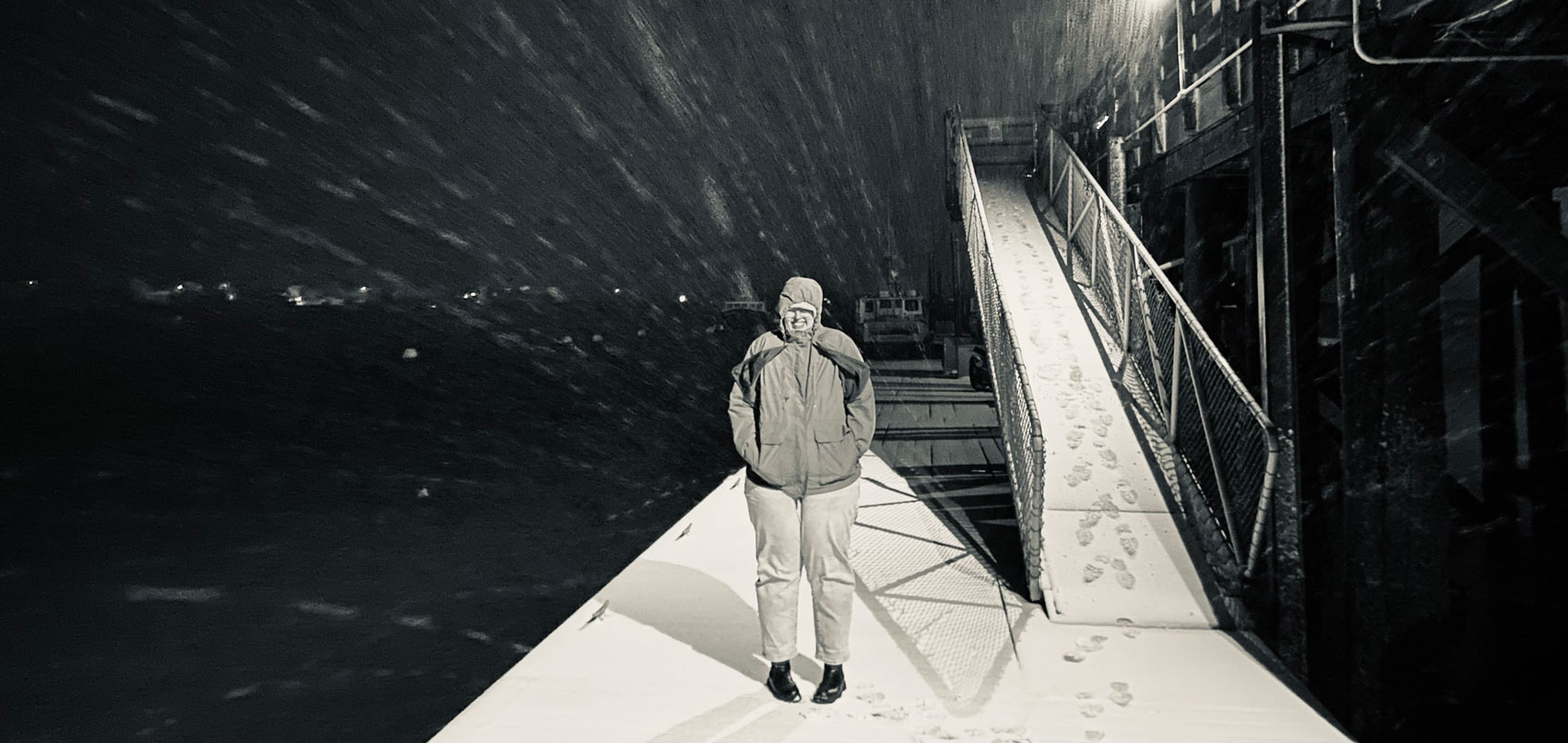10 December 2024. Emma and Hannes just returned from another trip to Wells Harbor in Maine, where we had been sampling and monitoring a local population of American sand lance (Ammodytes americanus) over the late summer and into fall. This was definitely a trip for the history books. Not because of the sand lance, mind you (we caught a total of 7), and certainly not for the beauty of the scenery either. We had hoped to catch these fish close to the begin of their spawning season (which starts around December) at low tide in the harbor, reasoning that our chances would be better at night. What we hadn't in mind was the snow storm that began walloping coastal Maine just as we arrived at the site. But what's a (slightly nutty) biologist to do? We gritted our teeth, hoped for the waders not to leak and braved the elements ...
Luckily, we were able to find a bed and a warm shower afterwards in the Alheim Commons of the Wells NERR. On the morning after, we walked into a frosty winter land, still somewhat incredulous that we actually went beachseining the night before. We believe that the drop in temperature has made the fish move to slightly deeper water that are not accessible via beachseine anymore. We learned something. Did we? But that's how science - sometimes - works.





